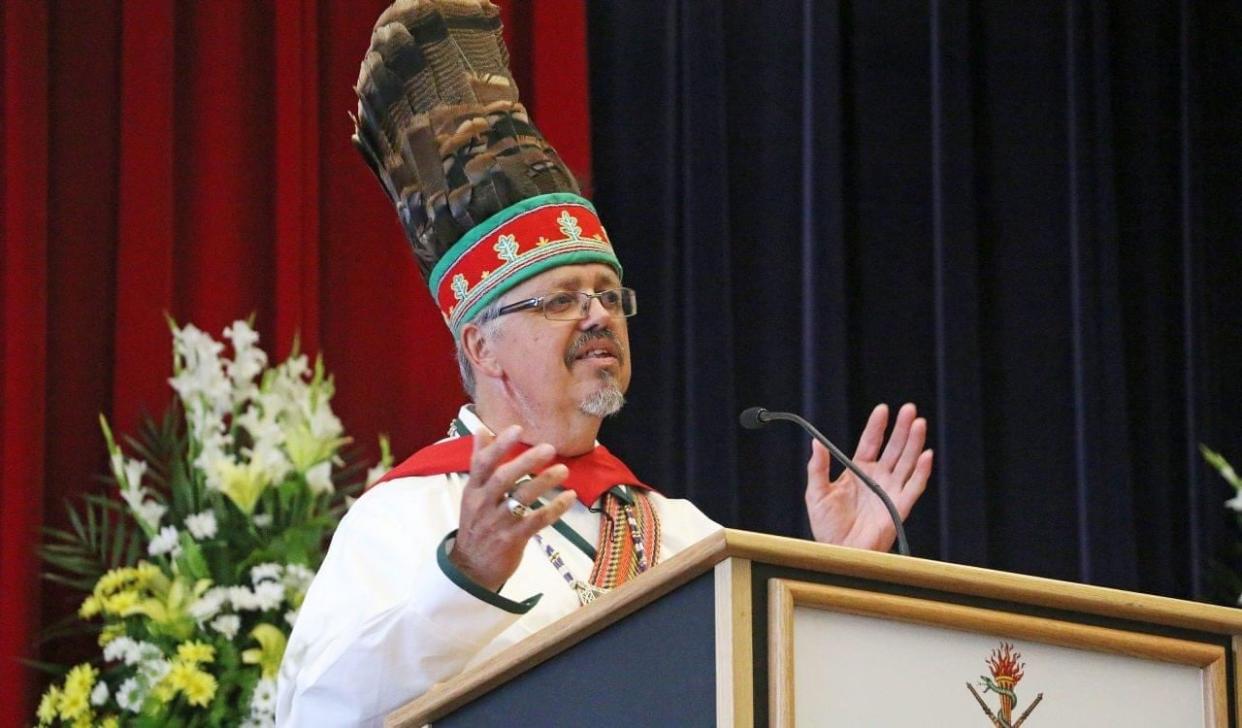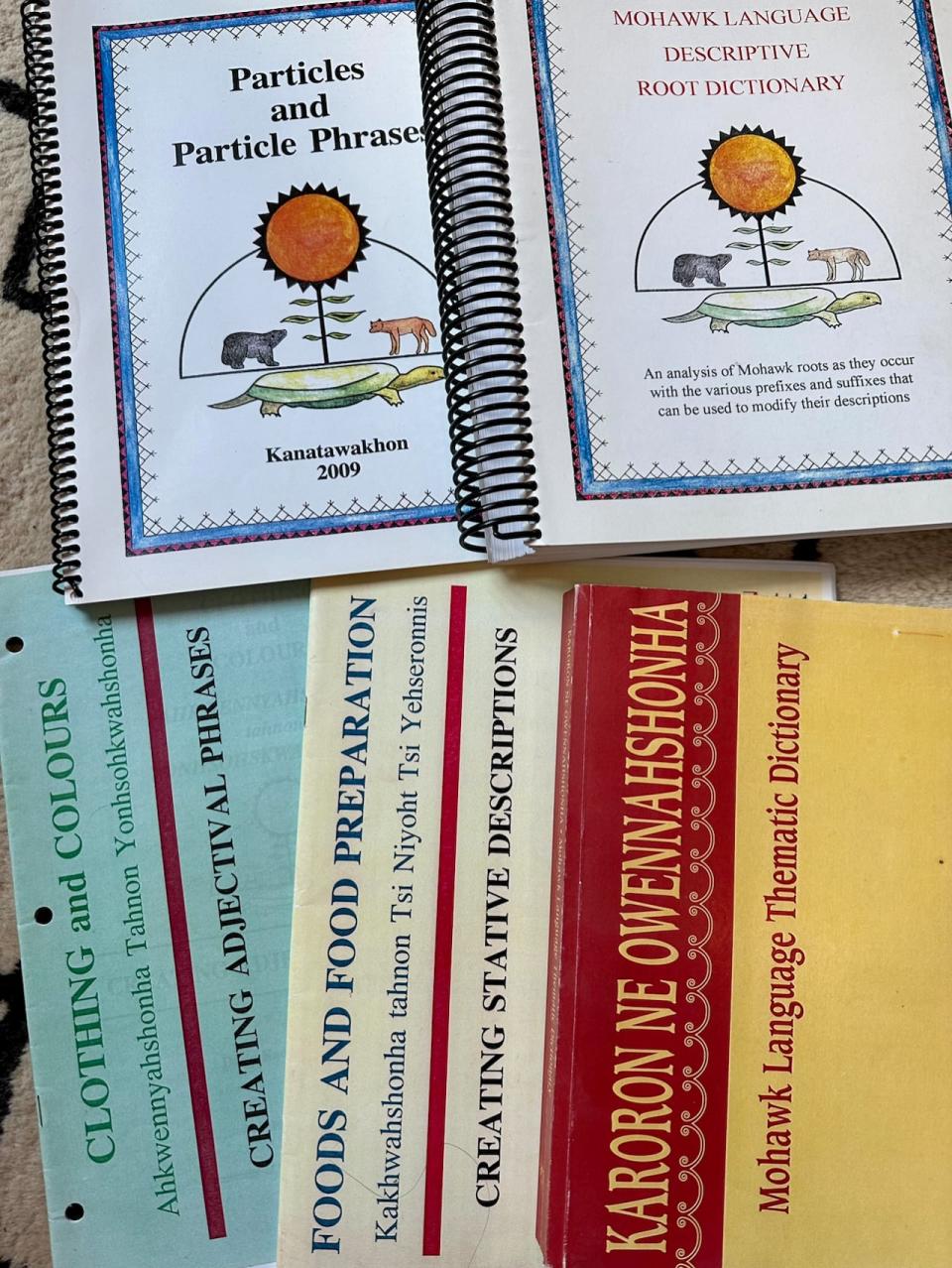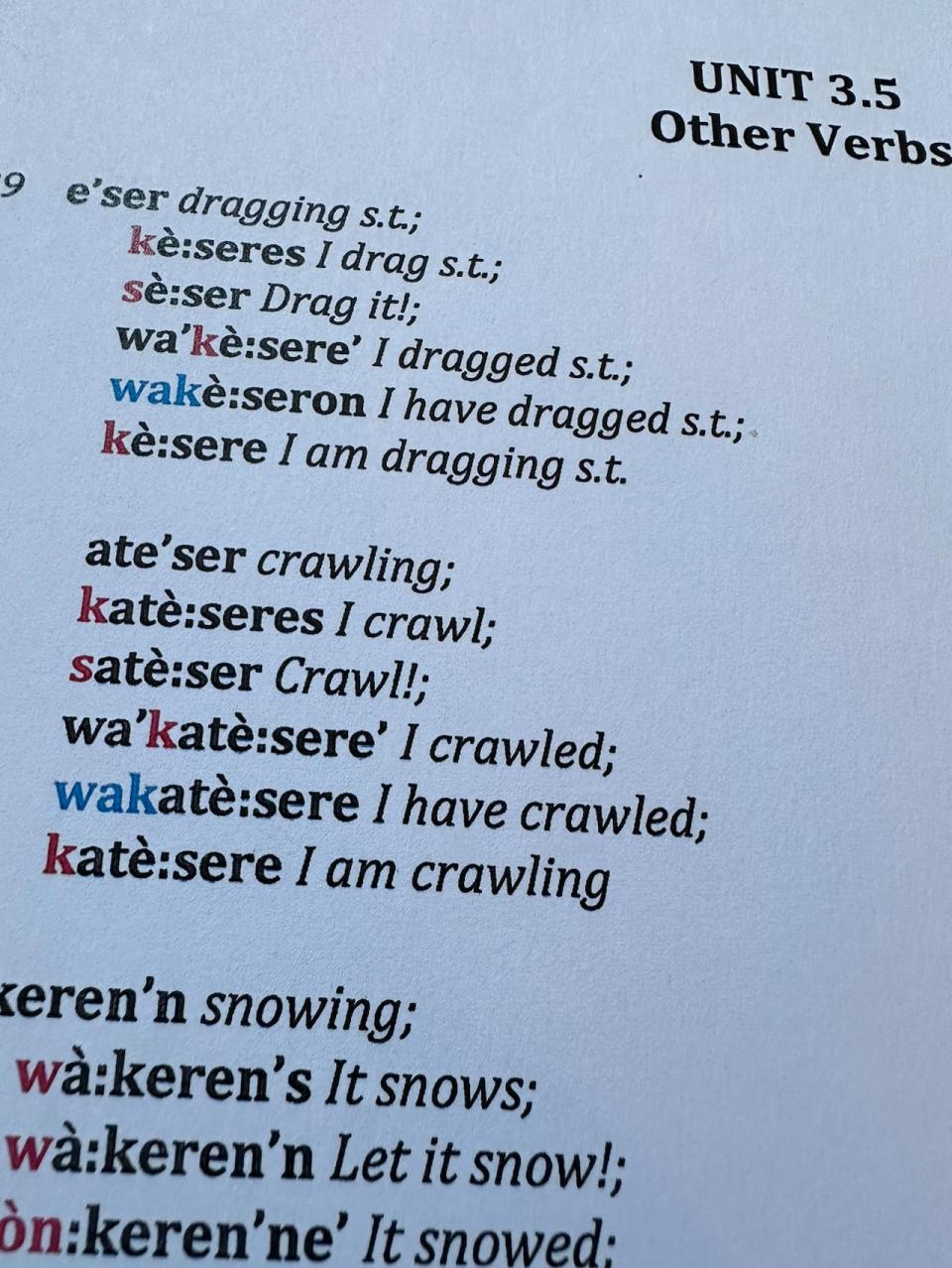Kanatawakhon, a Kanien'kéha teacher who helped revive the language, dies at 70

In June 1963, a Japanese song called Sukiyaki hit No. 1 on the Billboard charts in the United States.
Kanatawakhon (David) Maracle was a young man when he heard it on the radio and thought "if they can do that in Japanese why not Kanien'kéha," recalled his brother Curtis Maracle.
While he didn't write any songs in Kanienkéha (the Mohawk language) before he died last month, Kanatawakhon envisaged a new way to teach his language called the root word method and his legacy is heard through modern-day Kanienkéha speakers across Haudenosaunee territories in North America.
Kanatawakhon translates to "He shakes the town" in Kanien'kéha.
Visits to first language speakers
In the '50s and '60s, there were still first language speakers in Tyendinaga Mohawk Territory, the community where Kanatawakhon was born about 170 kilometres east of Toronto — but they were dwindling.
In his early teens he started visiting first language speakers in his community and writing words down phonetically from their conversations so he could remember them later, said his brother Curtis.
He felt compelled to learn the language, because it wasn't being taught by parents who were students of residential and day schools, which discouraged Indigenous languages in favour of English and French.
Kanien'kéha is still critically endangered today.
Kanien'kéha is a polysynthetic language — words consist of many morphemes, or word parts, and can function as standalone sentences. It is a verb-based language unlike English which relies heavily on nouns.
Kà:sere, for example, is the Kanien'kéha word for car. It literally translates to something that is dragged. Prefixes and suffixes can be added to the word to indicate ownership, descriptions of the car and the verb tense.
For example, yakoserehtsherí:yo means "she has a good car."
Root word method
In the '70s, Kanatawakhon studied all the Kanien'kéha texts he could, to source as many morphemes as he could find, to verify rules and patterns to determine how it all fit together.
Tehota'kerá:ton Green, a Kanien'kéha linguist from Tyendinaga Mohawk Territory said Kanatawakhon called these "always rules, with exceptions."
Green said he did this to learn the language more efficiently so that he could teach it to others.
Kanatawakhon wrote his dictionaries on sheets colour-coded so the parts of speech could be differentiated.

Kanatawakhon initially wrote his dictionaries on sheets colour-coded so the parts of speech could be differentiated. They were organized alphabetically in Kanien’keha rather than English. (Candace Maracle/CBC)
He began publishing his work as dictionaries and lexicons organized alphabetically according to roots of Kanien'keha rather than English translations of Kanien'keha words as was the established way, said Green.
"This was an inspiring feat and a true contribution to Kanien'keha and Indigenous language revitalization," said Green.
Kanatawakhon began calling his method of organizing and teaching Kanien'keha the "root word method."
Callie Hill, executive director of Tsi Tyónnheht Onkwawén:na, an adult Kanien'kéha immersion program in Tyendinaga, was a former student.
"He was just such a value to the community," said Hill.
"We would not have any of our Tyendinaga dialect if it weren't for Kanatawakhon."
He introduced Kanien'kéha to Tyendinaga's elementary school in the 1970s and began teaching at the Woodland Cultural Centre in Brantford, Ont., in the 1980s.
It was there that he met colleague and long-time friend Merle Richards.
Teaching and learning Kanien'kéha
Richards, a professor at Brock University in St. Catharines, Ont., then on sabbatical, decided to enrol in Kanatawakhon's course at the Woodland Cultural Centre.
"Somebody said ... 'Why is that white woman here?'" Richards said.
She told them she was there to learn the language.
"Nobody objected... so I stayed."
Kanatawakhon learned Richards was a professor at Brock in education and enlisted her help in developing curriculum for an immersion program he was establishing with his colleagues.

Kanien’kéha is a polysynthetic language. It is also a verb-based language unlike English which relies heavily on nouns. (Candace Maracle/CBC)
"David was remarkable in that respect, because he was one of the first Mohawk teachers who understood that teaching vocabulary isn't enough," Richards said.
"He understood that it was very important to learn how to make sentences."
In the 1990s Kanatawakhon taught at Western University in London, Ont., Six Nations Polytechnic and the Indigenous Education Institute on Six Nations.
Owennatekha Maracle, Turtle Clan from Six Nations, took night classes offered at Six Nations Polytechnic, but said he didn't retain much due to the complexities of the language. That's when Kanatawakhon realized change was needed in how language was taught at the novice level.
Green said Kanatawakhon advocated for the autonomy of the learner in Kanien'kéha language learning.
Rather than simply memorizing a list of words, Kanatawakhon's root word method helped learners craft words they wanted to say.
He was one of the first Mohawk teachers who understood that teaching vocabulary isn't enough.
- Merle Richards
Owennatekha remembered seeing dozens of small pieces of paper arranged across a table in Kanatawakhon's office at Western. Individually they meant nothing, but they could all be used to create sentences.
Together, they refined the root word method and developed the curriculum that would establish Onkwawenna Kentyohwka, an adult immersion program in Six Nations.
"When I first met him, there were no second language speakers," said Owennatekha, adding that most Kanien'kéha speakers at the time learned from birth.
"There's this enormous language revival taking place. All kinds of things are happening, all kinds of activities, all kinds of progress, all kinds of accomplishments being made, and it's all because of what he did."
The method and the resulting curriculum is used to help revitalize other Iroquoian languages including: Seneca, Oneida and Tuscarora.
Resistance to change
Initially Kanatawakhon struggled because people didn't understand his method. He was criticized, Richards said, because people assumed he took an objective and analytical approach to linguistics.
She recalled a meeting in Six Nations where he discussed bringing his program to schools there, and how he thought he could teach adults Kanien'kéha. He was challenged by a fluent speaker who told him the language has to come from the heart, ending the meeting.
"They didn't understand that it was coming from his heart," she said.
Richards said speakers were trying to protect their dialects.
"But it's important to realize that a language is more important than its varieties," said Richards, "You need to learn the underlying structures of a language, and David was working on that."
Maracle said his brother was dedicated to the language, often creating resources on his own time.
"I don't know how many publications he had and he did everything himself," he said.
"He never sought out any grants. It was all out of pocket for him."
Saying goodbye
Sukiyaki — the Japanese song that in part, influenced a Kanien'kéha language revitalization — spent three weeks at the top of the Billboard music charts in June 1963. Sixty years later, on June 29, 2023, Kanatawakhon died at the age of 70.
He was laid to rest in his hometown of Tyendinaga. Kanatawakhon was teaching at Western University up until his death.
Owennatekha delivered his friend's eulogy. In it, he spoke of receiving an award in Kanatawakhon's honour.
"I believed then, and more so now, that his work in revitalizing the language should be recognized, honoured and applauded," he said.


